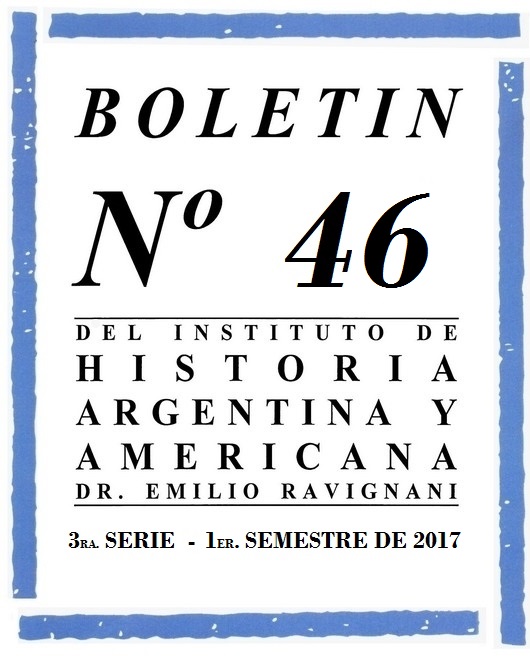The impact of indigenous politics on the frontier society: kinship networks and social structure in Carmen de Patagones, 1856-1879
Abstract
This article explores the impact of indigenous policies on the frontier society living at Carmen de Patagones, a town located in Northern Patagonia, between 1856 and 1879. During this period, a confederacy of cacicatos led by the lineage of the cousins Llanquitrúz and Saygüeque built an alliance with the town authorities and settlers. Through the analysis of local sources, this study shows that cacicatos’ policies, based on kinship and reciprocity, intended to build alliances and organize internal relationships of power. These policies were imposed over the creole society of the town, boosting the mestizaje process. Kinship ties ended up structuring the town’s social life, and involved indigenous and creole norms and practices. This work analyzes the marriages, de facto unions, baptisms and compadrazgos that took place in this town, as well as the role of women and subaltern sectors. It aims to bring the historiographies of rural regions, frontiers and indigenous societies into dialogue, to understand the transformations of neighboring societies during the 19th century.Downloads
The copyright is transferred to the Boletín, but the authors may retrieve them and reproduce their work in other media or formats by means of a written request to the Editorial Committee. In such cases, the Boletín will be cited as the first publication of the work.
The works are licensed under a Creative Commons Attribution-NonCommercial 4.0 International License, which allows others to share the work with an acknowledgment of their authorship and initial publication in this journal.
Also, by written request to the Editorial Committee of the Boletín, the authors may separately establish additional agreements for the non-exclusive distribution of the version of the work published in this journal (for example, placing it in an institutional repository or publishing it in a book), with an acknowledgement of its initial publication here. No commercial uses are allowed.



















